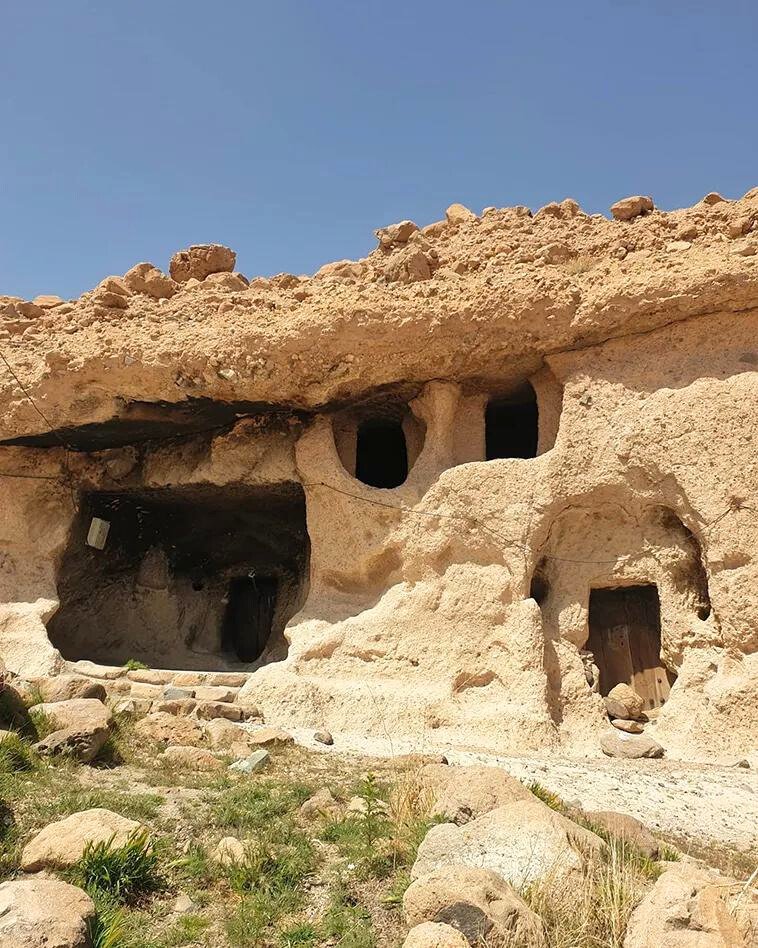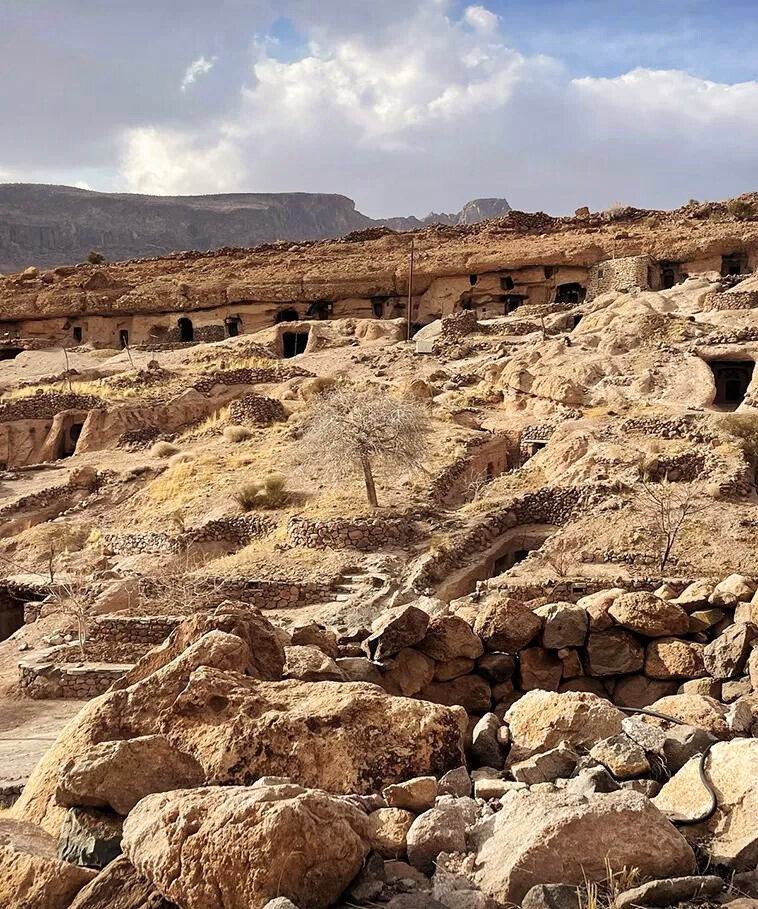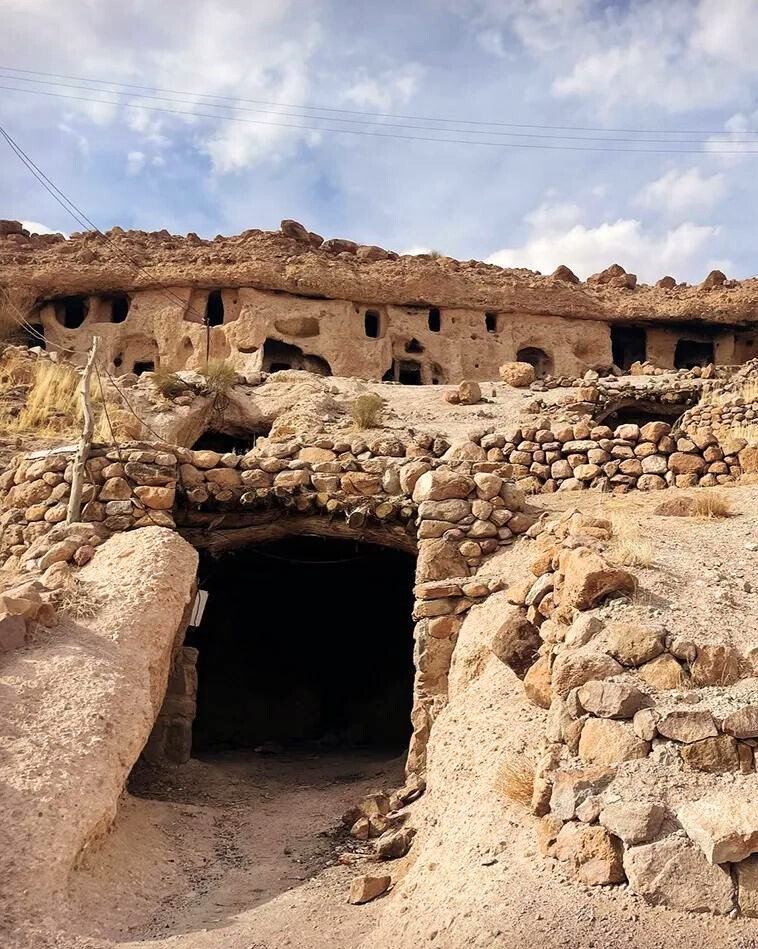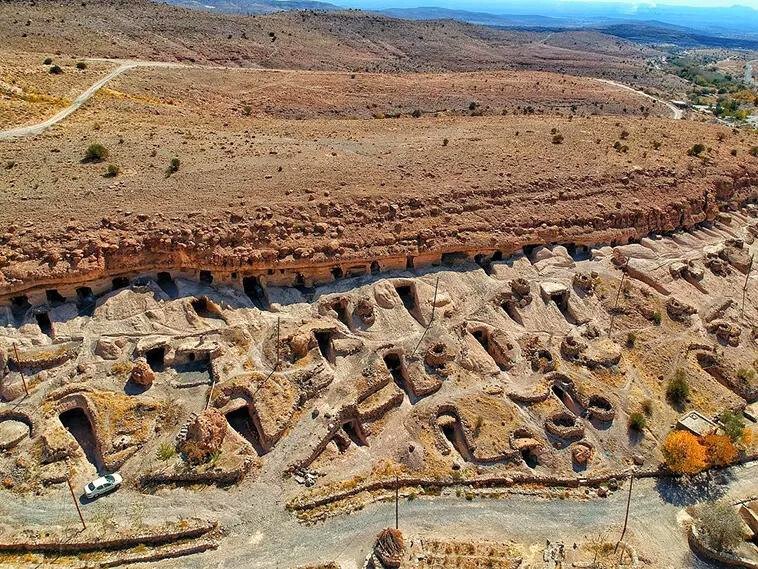Meymand village is a remarkable 12,000-year-old cave village situated in Iran’s Kirman Province. Home to 105 residents living in 44 households, this ancient settlement is among the oldest continuously inhabited villages in the country. Evidence suggests that the site has been occupied for around 3,000 years. Still, archaeological findings, including engravings nearly 10,000 years old and pottery deposits dating back 6,000 years, indicate an even longer history of human presence.

Originally a Zoroastrian settlement during the pre-Islamic era, Meymand also shows signs of Mithraic worship, as evidenced by the presence of an Atash-Kadeh, or fire temple. The early inhabitants likely practiced unique burial customs, placing their dead in crypts carved into the mountainsides. A 400-square-meter complex of 15 circular units found at the site contains human bones and personal artifacts, suggesting it once served as an ancient crypt or ossuary.
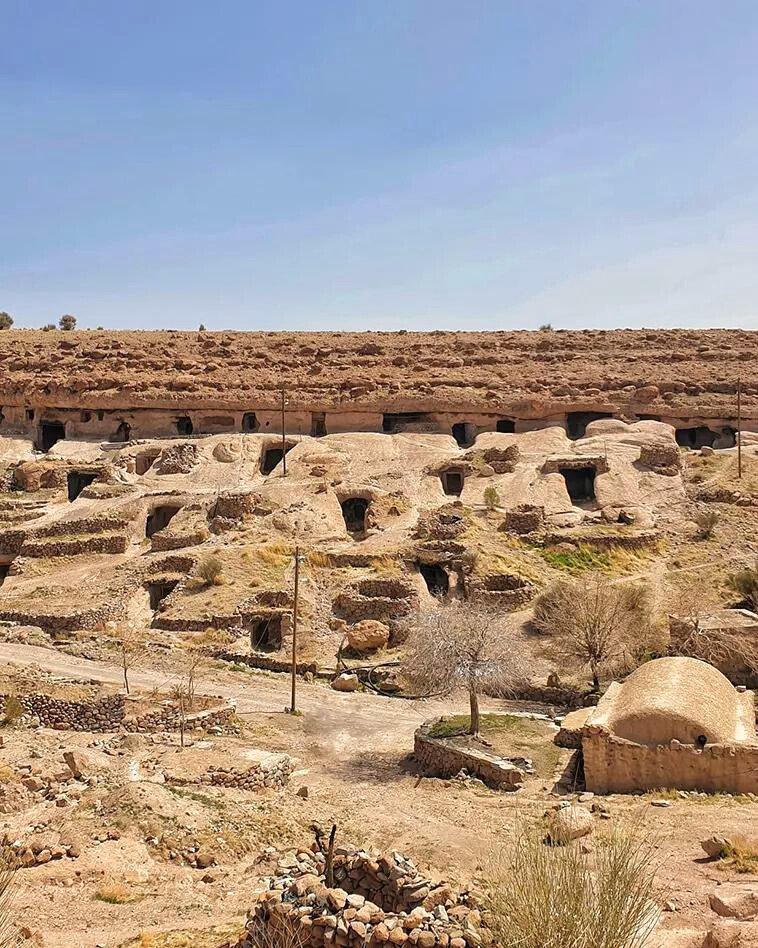
Today, Meymand contains approximately 2,500 carved rooms, though only about 20% are still in use. One theory suggests that Meymand was founded around 800 BC by Aryan tribes who were drawn to the area for religious reasons, as mountains were considered sacred by these followers of Mithra. The second theory proposes that Meymand dates back to the 2nd or 3rd century AD, during the Arsacid era when different tribes from southern Kirman migrated and established settlements in the region. A nearby fortress housing over 150 Sassanid-era ossuaries further bolsters this theory, suggesting that Meymand was part of a larger settlement network during that time.
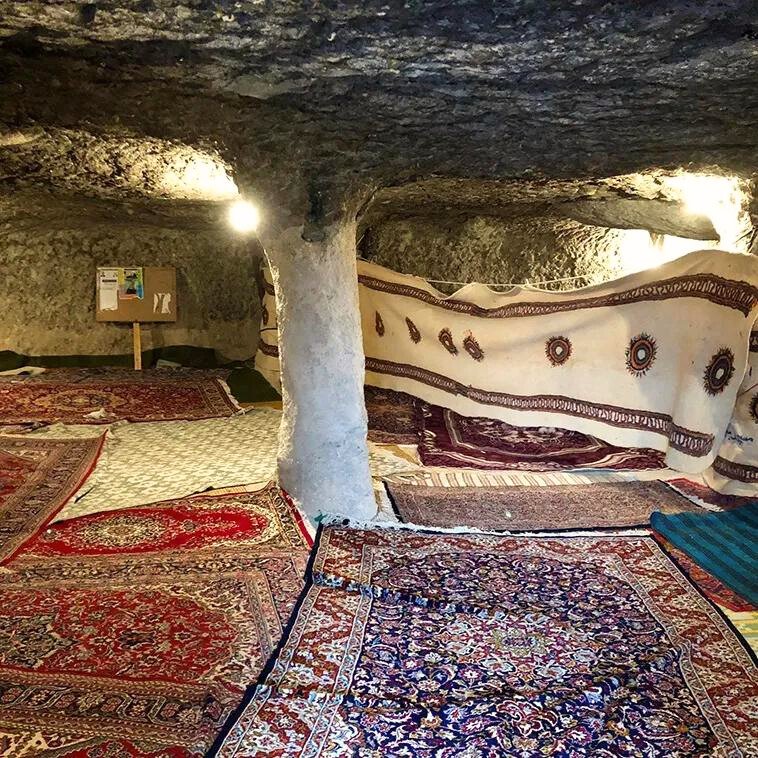
Living in Meymand village is difficult because of its dry landscape and extreme climate conditions. The villagers rely on two underground qanats, traditional irrigation tunnels that bring water from the surrounding hills, as their main water source. The local vegetation consists mainly of drought-resistant plants such as pistachio and almond trees. Today, residents sustain themselves through agriculture, animal husbandry, carpet weaving, and tourism.

Meymand’s cultural and historical significance was internationally recognized in 2015 when it was designated a UNESCO World Heritage Site. Despite the harsh conditions, this ancient village is a testament to human resilience and the rich cultural history of Iran.
